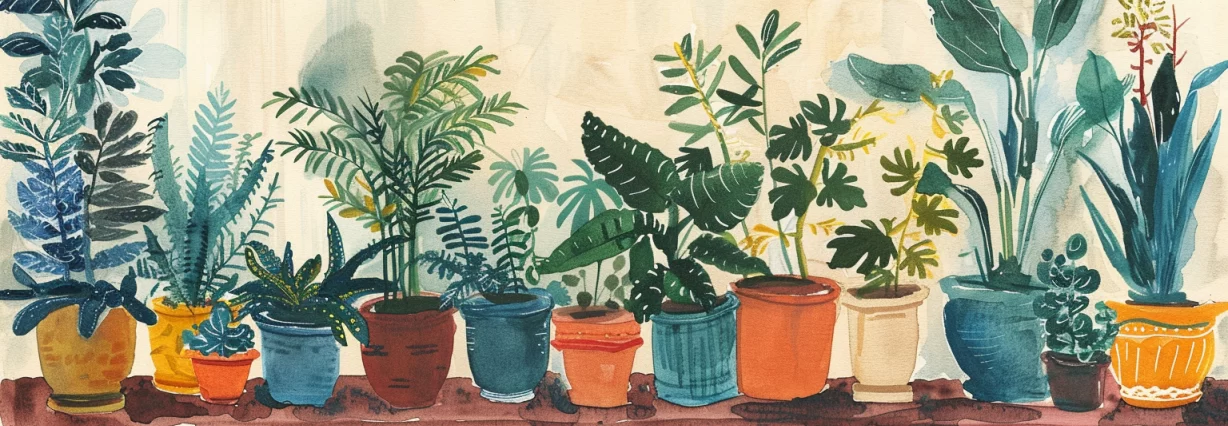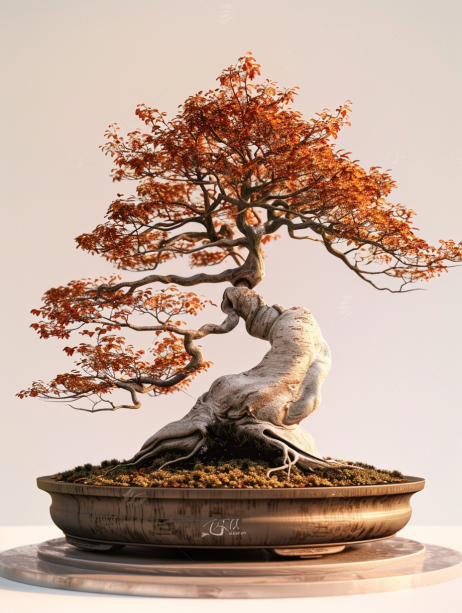Bonsai cultivation is an ancient Japanese art form that has been practiced for centuries. Enthusiasts of this tradition often find it a rewarding and fulfilling hobby, but it can also be challenging. Troubleshooting common issues in bonsai care is essential for maintaining a healthy and thriving bonsai tree.
To begin with, having a solid foundation in bonsai care is crucial for preventing common issues from arising. This includes understanding the basics of watering, fertilizing, pruning, and repotting. By providing the right amount of water, nutrients, and light, bonsai trees can grow strong and healthy. However, even with the best care, problems can still occur.
When issues do arise, it is important to identify and address them promptly. Common problems in bonsai cultivation include leaf problems, pests, diseases, growth concerns, root rot, needle yellowing, and leaf burn. By understanding the causes of these issues and implementing the appropriate solutions, enthusiasts can ensure that their bonsai trees thrive for years to come.
Understanding Bonsai Basics
Bonsai is a Japanese art form that involves cultivating miniature trees in small containers. It is a practice that has been around for centuries and has deep cultural significance in Japan. In recent years, bonsai cultivation has become increasingly popular worldwide, with enthusiasts and hobbyists embracing the art form.
Bonsai History and Significance

Bonsai has its roots in China, where miniature trees were grown in pots as early as the Han Dynasty (206 BCE – 220 CE). The practice was later adopted by the Japanese, who refined and developed it into today’s art form. Bonsai has since become an important part of Japanese culture, with many people viewing it as a symbol of harmony, balance, and simplicity.
Types of Bonsai Trees
There are many different types of bonsai trees, each with its own unique characteristics and requirements. Some of the most popular species include junipers, pines, maples, and ficus. Each species has distinct growth habits and requirements, so choosing the right tree for your specific needs and goals is important.
Anatomy of a Bonsai
Bonsai trees are miniature versions of their full-sized counterparts, and as such, they have the same basic anatomy. A bonsai tree consists of a trunk, branches, leaves, and roots. The trunk is the tree’s main stem, and it supports the branches and leaves. The branches are the secondary stems that grow off the trunk, and they provide structure and shape to the tree. The leaves are the primary photosynthetic organs of the tree, and they capture sunlight and convert it into energy. The roots are the underground structures that anchor the tree and absorb water and nutrients from the soil.
Understanding the basics of bonsai cultivation is essential for anyone interested in growing these miniature trees. By learning about the history and significance of bonsai, the different types of bonsai trees available, and the anatomy of a bonsai, you can develop a solid foundation for successful cultivation.
Essential Bonsai Care Techniques

When it comes to bonsai tree care, there are several techniques that are essential to ensure the tree stays healthy and thriving. This section will discuss the proper techniques for watering, sunlight and shade requirements, soil and repotting essentials, and pruning and wiring methods.
Proper Watering Techniques
Water is essential for the survival of bonsai trees. However, overwatering or underwatering can be detrimental to their health. It is important to only water the tree when the soil is dry. The frequency of watering will depend on the tree species, the pot’s size, and the environment it is in. Bonsai trees should be watered thoroughly until the water runs out of the drainage holes.
Sunlight and Shade Requirements
Bonsai trees require a balance of sunlight and shade. Direct sunlight can scorch the leaves and cause damage to the tree, while too much shade can inhibit growth. It is important to place the tree in an area that receives the appropriate amount of sunlight for its species. Some species of bonsai trees require more sunlight than others, so it is important to research your tree’s specific needs.
Soil and Repotting Essentials
The soil mix used for bonsai trees should be well-draining and provide adequate aeration. It is important to repot the tree every two to three years to ensure that the soil quality remains optimal and the roots have room to grow. During repotting, it is important to prune the roots and remove any dead or damaged roots.
Pruning and Wiring Methods

Pruning is an essential technique in bonsai tree care. It is used to shape the tree and control its growth. It is important to use the proper pruning techniques to prevent damage to the tree. Wiring is also used to shape the tree, but it should be done with caution to prevent damage to the bark and branches.
Overall, proper bonsai tree care requires attention to detail and knowledge of the tree’s specific needs. Bonsai trees can thrive and bring beauty to any environment by following these essential techniques.
Troubleshooting Health Issues
Bonsai trees are susceptible to a range of health issues, including diseases, pests, and nutrient deficiencies. In this section, we will discuss some of the most common health issues that bonsai trees face and how to address them.
Recognizing Diseases and Pests
Diseases and pests can cause a range of problems for bonsai trees, including yellowing leaves, fungal infections, and weak branches. Some of the most common pests that affect bonsai trees include aphids, spider mites, ants, and scale insects. Fungal diseases are also common and can cause discolored leaves, mold, and other issues.
To recognize diseases and pests, it is important to regularly inspect your bonsai tree for signs of damage or infestation. Look for yellowing or wilting leaves and discolored spots or mold on the leaves or branches. If you notice any of these signs, immediately prevent the issue from spreading.
Dealing with Watering Issues
One of the most common issues that bonsai trees face is overwatering or underwatering. Overwatering can lead to root rot and other problems, while underwatering can cause the tree to dry out and wilt. To prevent these issues, finding the right watering balance is important.
Before watering your bonsai tree, check the soil to see if it is dry or moist. Water the tree thoroughly if the soil is dry, but avoid overwatering. If the soil is moist, wait a few days before watering again.
Addressing Soil and Nutrient Problems
Nutrient deficiencies and soil problems can also cause health issues for bonsai trees. If your tree is not getting the nutrients it needs, it may develop yellowing or wilting leaves, or weak branches. It is important to use the right soil and fertilizers to address these issues.
Ensure your bonsai tree is planted in well-draining soil rich in nutrients. Use a balanced fertilizer to provide your tree with the nutrients it needs to thrive. Adjust your fertilizer or soil accordingly if you notice any signs of nutrient deficiencies, such as yellowing leaves or weak branches.
Recognizing and addressing common health issues in bonsai trees can help your tree thrive and grow strong. Regular inspection and care can help prevent these issues from becoming more serious and keep your bonsai tree healthy and beautiful for years to come.
Advanced Bonsai Maintenance
Nutrition and Fertilization
Fertilizing is an essential aspect of bonsai cultivation. Bonsai trees require a steady supply of essential nutrients to achieve optimal growth and aesthetics. Fertilizers contain essential nutrients like nitrogen, phosphorus, and potassium, which are necessary for the healthy growth of bonsai trees.
The type of fertilizer you use depends on the species of bonsai tree you are cultivating. For example, deciduous trees require more nitrogen than evergreen trees. It’s important to read the instructions on the fertilizer package and follow them carefully. Over-fertilization can damage the roots and foliage of bonsai trees.
Climate and Environmental Factors
Bonsai trees require a specific climate and environmental conditions to thrive. Temperature and humidity levels are critical factors to consider when cultivating bonsai trees. Indoor bonsai trees require different temperature and humidity levels than outdoor bonsai trees.
Air circulation is also important for bonsai trees. Stagnant air can lead to fungal infections and other diseases. Ensure that your bonsai tree has proper air circulation by placing it in a well-ventilated area.
Training and Aesthetics

Bonsai training and aesthetics are essential components of advanced bonsai maintenance. Bonsai training involves pruning, wiring, and shaping the bonsai tree to achieve the desired aesthetic.
The type of soil you use for your bonsai tree is also important. Well-draining soil is critical for the healthy growth of bonsai trees. Bonsai soil typically consists of a mixture of akadama, lava rock, and pumice.
In conclusion, advanced bonsai maintenance requires attention to detail and a thorough understanding of the specific needs of your bonsai tree. By following the guidelines for fertilization, climate and environmental factors, and bonsai training and aesthetics, you can ensure your bonsai tree’s healthy growth and aesthetics.
Preventative Measures and Solutions
Pest Prevention and Treatment
Pests can be a major issue for bonsai trees, especially when they are grown indoors. To prevent pest infestations, it is important to maintain a healthy balance in your bonsai’s environment. This means ensuring the tree gets the right amount of water, light, and nutrients. It is also important to keep the tree hydrated and to repot it regularly.
If you do notice a pest infestation, there are several solutions you can try. Insecticidal soap is a popular option for treating pests on bonsai trees. You can also try using organic pesticides or fungicides to address the specific needs of your tree species.
Disease Management Strategies
Diseases can be just as damaging to bonsai trees as pests. One of the most effective ways to prevent disease is to ensure your bonsai gets the right amount of water and nutrients. Over-watering can lead to root rot and other issues, so it is important to make sure that your bonsai’s soil is well-draining.
If you do notice signs of disease, such as yellowing leaves or leaf spots, it is important to act quickly. Fungicides can be effective in treating fungal infections, while insecticidal soap can be used to treat leaf spots caused by pests.
Ensuring Proper Growth Conditions
Different bonsai trees have different specific needs in terms of heat, humidity, and other growth conditions. For example, ficus and juniper trees require different levels of humidity to thrive. Chinese elm trees require a lot of sunlight, while jade trees prefer more shade.
To ensure that your bonsai is thriving, it is important to research your tree species’ specific needs and provide it with the appropriate growing conditions. This may involve adjusting the size of the container, repotting regularly, or using a watering can to provide the right amount of water.
Frequently Asked Questions
How can I revive an overwatered bonsai tree?
Overwatering is a common problem with bonsai trees and can cause root rot, leading to the tree’s death. If your bonsai tree is overwatered, you can revive it by reducing the amount of water you give it and allowing the soil to dry out between waterings. You can also improve drainage by repotting the tree in a well-draining soil mix.
What is the typical recovery time for bonsai leaves to regrow after falling off?
The recovery time for bonsai leaves to regrow after falling off depends on the species of the tree and the reason why the leaves fell off. In general, it can take several weeks to several months for new leaves to grow. To encourage new growth, ensure the tree gets the right amount of light, water, and nutrients.
What are the signs of a healthy bonsai versus an unhealthy one?
A healthy bonsai tree will have vibrant green leaves, a strong root system, and a well-proportioned shape. An unhealthy bonsai tree may have yellow or brown leaves, weak or damaged roots, and an unbalanced or stunted appearance. Other signs of an unhealthy bonsai tree include wilting, drooping, and a lack of new growth.
How do I deal with pest infestations in bonsai trees?
Pest infestations in bonsai trees can be treated with insecticides or by manually removing the pests. It’s important to identify the type of pest before treating the infestation, as different pests require different treatments. To prevent pest infestations, keep your bonsai tree healthy by providing it with the right amount of light, water, and nutrients.
Why are the leaves on my bonsai tree turning brown, and how can I fix it?
Brown leaves on a bonsai tree can be caused by a variety of factors, including overwatering, underwatering, nutrient deficiencies, and pest infestations. To fix the problem, identify the cause and take appropriate action. For example, if the tree is overwatered, reduce the amount of water you give it and allow the soil to dry out between waterings.
What should I do if the soil of my bonsai tree is infested with tiny black bugs?
Tiny black bugs in the soil of a bonsai tree may be fungus gnats, which are attracted to moist soil. To get rid of them, allow the soil to dry out between waterings and use a sticky trap to catch the adult gnats. You can also improve drainage by repotting the tree in a well-draining soil mix.



1 thought on “Troubleshooting Common Issues in Bonsai Cultivation: Expert Tips”
Comments are closed.